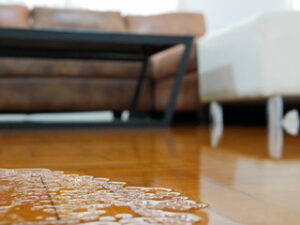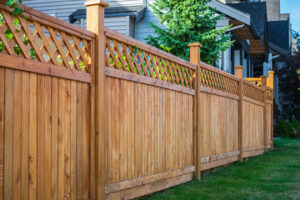Water Damage Restoration Oklahoma City is a serious and time-consuming task. Homeowners often hire a professional to handle the entire project, from cleaning and drying to removing broken possessions and doing major construction repairs.

The first step is to assess the damage and ensure safety. Make sure the electricity is turned off and that all items with electrical components are moved to another room.
The first step in any water damage restoration is the removal of excess water from the affected area. This can be done in a few different ways, depending on the scale of the problem and the available tools. Smaller jobs may be able to be handled by simply pumping out the water, while large commercial fans and dehumidifiers can be used in larger areas to help speed up the drying process. It is also helpful to open windows and doors to allow for air circulation, which can help the water to evaporate more quickly.
The next step is to check for any structural damage caused by the water. It is important to note that the longer that water is allowed to remain in a building, the more damage it can cause to both the structure and its contents. This is why it is critical to call a professional immediately if you believe that your home has sustained water damage.
It is also important to turn off any electricity in the affected area. If the power is left turned on, it could create an electrocution risk if water gets into outlets and touches exposed wires. It is also recommended to remove any furniture or other items from the affected areas that can be saved, and take them to a safe place until the restoration company can arrive.
Once the majority of the water has been removed, it is then time to dry out the remaining area. This can be done in a number of ways, including using wet/dry shop vacuums, large commercial fans and dehumidifiers, opening windows to allow for the passage of air (which will help with evaporation), and simply throwing towels on top of puddles to absorb some of the excess water.
It is also a good idea to inspect the walls and carpet for any moisture pockets. It is not uncommon for these pockets to contain mold, which can be dangerous to one’s health. It is important to have these pockets identified and addressed as soon as possible, as this will prevent long-term issues such as wood rot and mold growth.
Drying
Drying the affected area is the next step of a water damage restoration project. This is one of the most crucial steps, especially if there are any structural components that may have been compromised by the excess water. If it is safe to do so, a professional will open up all of the windows and doors in the room or areas that have been affected by the water damage and set up fans and dehumidifiers to help improve air circulation.
This will allow moisture to be drawn away from the structure and into the outdoor environment where it can naturally evaporate. This will also help to prevent the formation of mold and mildew that thrives in moist conditions.
In more serious cases, professionals will use specialized drying equipment such as air movers and dehumidifiers to remove the moisture from the air in the affected area. This will take some time, but it is vital to the success of a restoration project.
Depending on the extent of the water damage, a professional may need to test the humidity levels in the area with a device called a psychrometric gauge. This will help them determine the moisture content in the air and how much longer it will take for the area to dry completely.
After the moisture level has been tested and the area has been dried out, any soiled fabrics or materials should be cleaned with a disinfectant that is specifically designed for cleaning fabrics that have been exposed to water. It is important to clean these items immediately after the water damage occurs in order to avoid any mold or mildew growth.
In some cases, professionals will need to replace carpeting, drywall and other damaged items that have been saturated by the excess water. This is especially true if the wood in a home has been soaked through to the subflooring. This is a job that is best left to professionals who will ensure that all moisture has been removed and the wood is dry before it is replaced. The longer that wood remains saturated, the more extensive and costly the repairs will be.
Cleaning
Once the source of water has been turned off and the contents removed, it’s time to begin cleaning and sanitizing. Depending on the type of water damage, this may be as simple as wiping down surfaces with a disinfecting agent or it may require more extensive work such as removing insulation and drywall to scrub and rinse off contaminants. This step of the process is where professional restoration services come in handy since they have a range of special tools and techniques that aren’t available to homeowners.
Before starting cleanup and sanitization, make sure to assess the area for safety hazards. It is imperative to turn off any electricity or gas that may have been affected by the water and wear proper PPE such as gloves, masks, goggles, and protective footwear. This can prevent electrocution and other hazardous side effects from contaminated water.
After assessing the area, it’s important to get as much of the water out as possible to avoid long-term issues such as mold and mildew. This can be done by using a wet/dry vacuum, mop, towels, and fans to get the excess moisture out of the area. It is also a good idea to open windows and doors, if possible, to allow for airflow and speed up the drying process.
If any items have sustained water damage and can’t be washed or disinfected, it is best to throw them away. This includes mattresses, carpeting, rugs, cosmetics, books, baby toys, and upholstered furniture. In addition, if the water came from sewage or flood waters, it’s important to check with local authorities for proper disposal instructions.
It’s always a good idea to hire professionals for the clean-up and sanitation process. They have the tools and training to remove any water, disinfect, and deodorize affected areas. They can also help with the repairing and reconstruction phase to return the building to its initial livable standard.
Repairing
Water damage repair is an essential process that must begin as soon as possible to preclude further damage. It can also significantly reduce the overall cost of restoration.
After assessing the extent of the damage, the water damage repair company will determine how much work is needed to get your home back to normal. They will start by removing all the standing water. This can be done using powerful vacuums and pumps that can remove gallons of water in one go. They will then dry out the affected area. This can be done by removing carpets and drywall, or by using dehumidifiers and fans. They will also disinfect anything that has come into contact with the water, to ensure any bacteria is eliminated.
The next step is to determine what can be saved and what must be replaced. This is a crucial process, as it will help the water damage restoration company to prevent further problems down the line. For example, if the walls or carpets have been saturated by water for an extended period of time, they will need to be removed and replaced. It is also a good idea to remove any items that have been severely warped or moldy, as these can be difficult to restore.
Once the contaminated materials have been removed, the water damage restoration company will begin to clean and sanitize the affected areas. They will use specialized cleaning products to eliminate any bacteria and other harmful substances that may be present in the water. Then, they will dry out the area by opening windows and using fans to promote air flow. This will help the drying process to progress more quickly and prevent further damage to your home.
If the structural components of your house have been impacted by water, the water damage restoration company will need to replace them. This can be a complicated process and will depend on the type of water that caused the damage. For example, gray or black water damage requires more advanced techniques to clean and may require a different process than clean water damage.
